Benjamin Pham
DeepAdjoint: An All-in-One Photonic Inverse Design Framework Integrating Data-Driven Machine Learning with Optimization Algorithms
Sep 28, 2022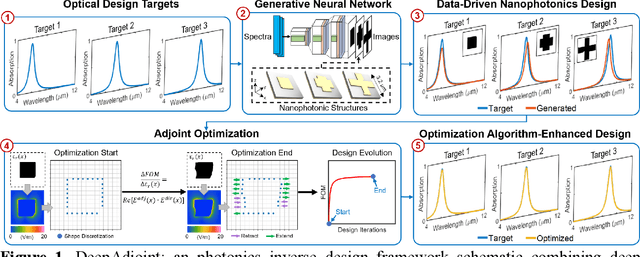
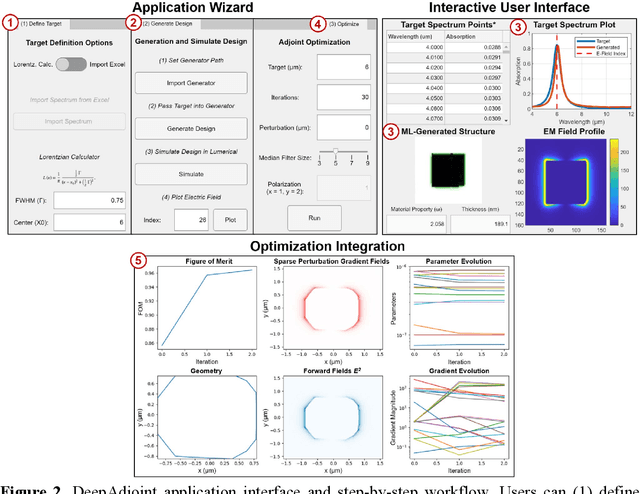
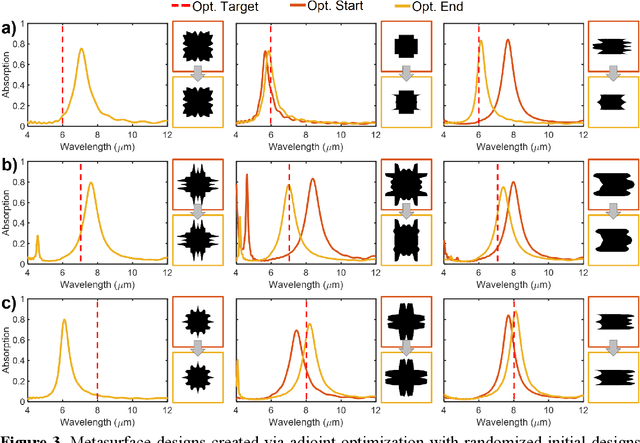
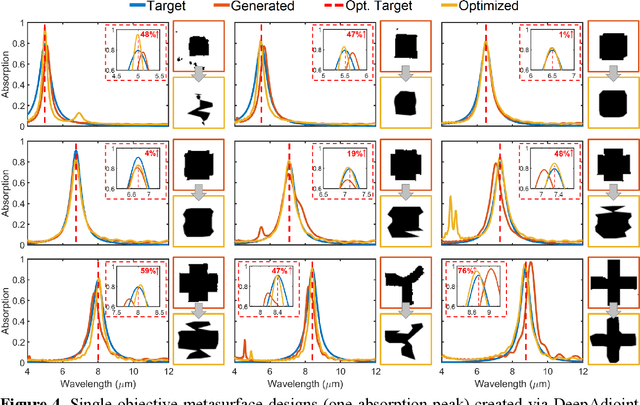
Abstract:In recent years, hybrid design strategies combining machine learning (ML) with electromagnetic optimization algorithms have emerged as a new paradigm for the inverse design of photonic structures and devices. While a trained, data-driven neural network can rapidly identify solutions near the global optimum with a given dataset's design space, an iterative optimization algorithm can further refine the solution and overcome dataset limitations. Furthermore, such hybrid ML-optimization methodologies can reduce computational costs and expedite the discovery of novel electromagnetic components. However, existing hybrid ML-optimization methods have yet to optimize across both materials and geometries in a single integrated and user-friendly environment. In addition, due to the challenge of acquiring large datasets for ML, as well as the exponential growth of isolated models being trained for photonics design, there is a need to standardize the ML-optimization workflow while making the pre-trained models easily accessible. Motivated by these challenges, here we introduce DeepAdjoint, a general-purpose, open-source, and multi-objective "all-in-one" global photonics inverse design application framework which integrates pre-trained deep generative networks with state-of-the-art electromagnetic optimization algorithms such as the adjoint variables method. DeepAdjoint allows a designer to specify an arbitrary optical design target, then obtain a photonic structure that is robust to fabrication tolerances and possesses the desired optical properties - all within a single user-guided application interface. Our framework thus paves a path towards the systematic unification of ML and optimization algorithms for photonic inverse design.
Hybrid Supervised and Reinforcement Learning for the Design and Optimization of Nanophotonic Structures
Sep 08, 2022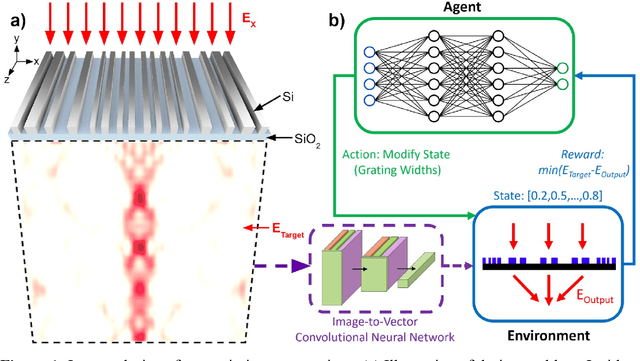
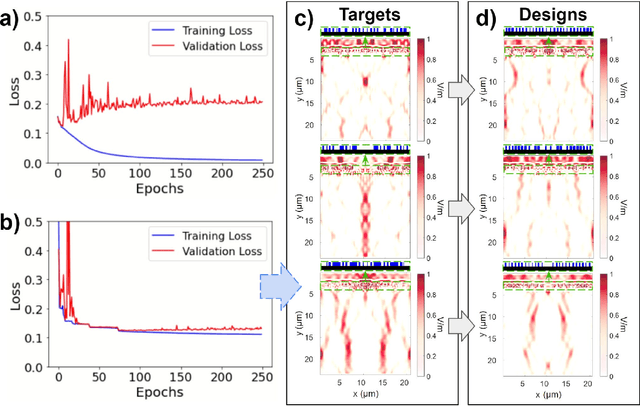
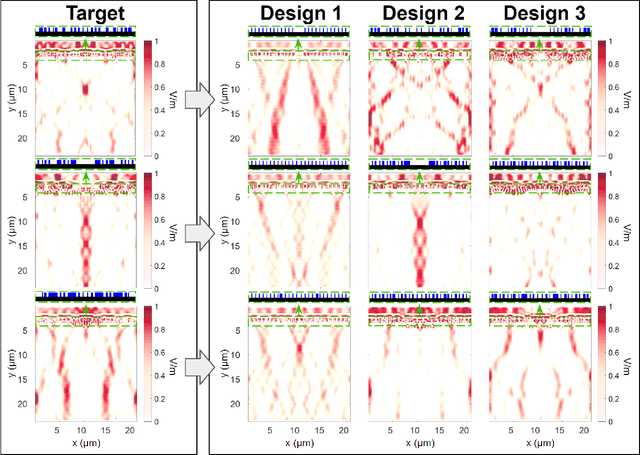
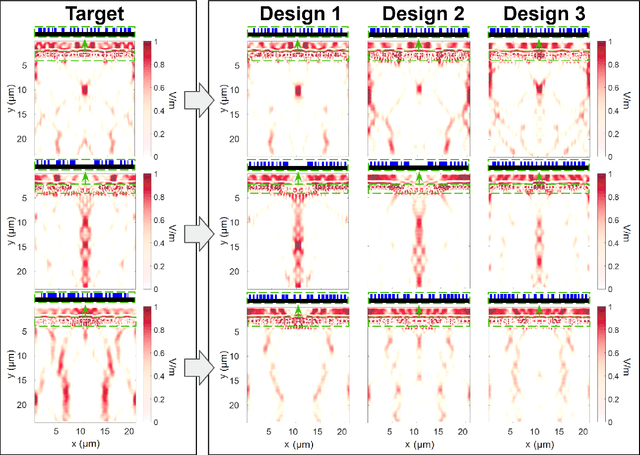
Abstract:From higher computational efficiency to enabling the discovery of novel and complex structures, deep learning has emerged as a powerful framework for the design and optimization of nanophotonic circuits and components. However, both data-driven and exploration-based machine learning strategies have limitations in their effectiveness for nanophotonic inverse design. Supervised machine learning approaches require large quantities of training data to produce high-performance models and have difficulty generalizing beyond training data given the complexity of the design space. Unsupervised and reinforcement learning-based approaches on the other hand can have very lengthy training or optimization times associated with them. Here we demonstrate a hybrid supervised learning and reinforcement learning approach to the inverse design of nanophotonic structures and show this approach can reduce training data dependence, improve the generalizability of model predictions, and shorten exploratory training times by orders of magnitude. The presented strategy thus addresses a number of contemporary deep learning-based challenges, while opening the door for new design methodologies that leverage multiple classes of machine learning algorithms to produce more effective and practical solutions for photonic design.
 Add to Chrome
Add to Chrome Add to Firefox
Add to Firefox Add to Edge
Add to Edge